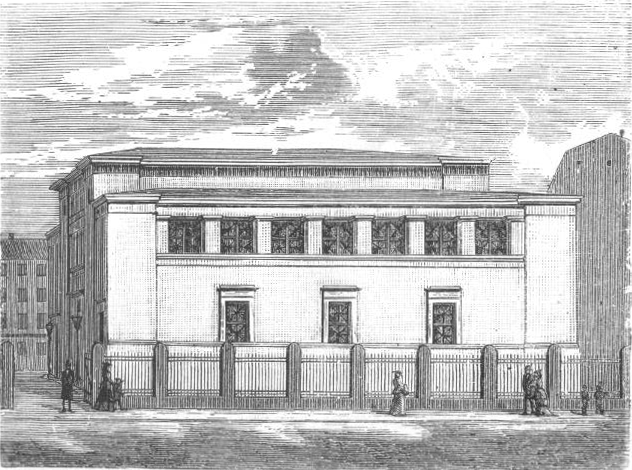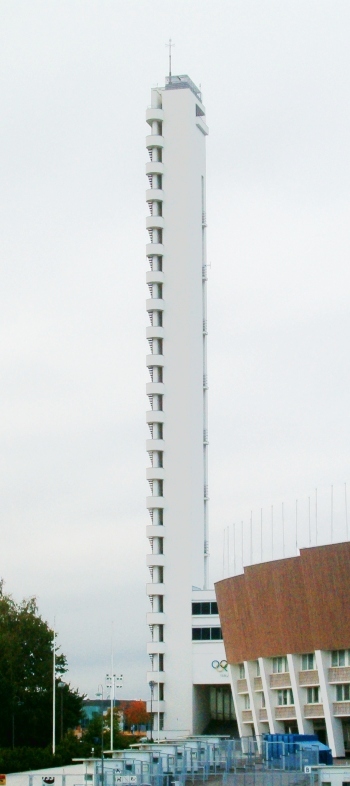|
Krystalgade
Krystalgade (literally "Crystal Street") is a street in central Copenhagen, Denmark, connecting Nørregade to Købmagergade. Copenhagen Central Library and the Great Synagogue of Copenhagen are located in the street. History The street is mentioned in 1492 as "a small alley leading to Cabtor's gate" and again in 1528 as "the alley to the rear of Cantor's gate reaching from Nørregade to Købmagergade". From 1600, it is referred to as Skidenstræde (''Schiden Strede''), literally "Shitty Alley", probably due to the odeur from a covered sewer which passed under it. It was divided into Store Skidenstræde ("Great Shitty Street") and Lille Skidenstræde ("Little Shitty Street"), located west and east of Fiolstræde respectively. University of Copenhagen's first botanical garden was located on the south side of Store Skidenstræde. At some point, Store Skidenstræde became colloquially known as Krystalgade. The name (''Cristal Gade'') is seen on Gedde's map of Copenhagen from 17 ... [...More Info...] [...Related Items...] OR: [Wikipedia] [Google] [Baidu] |
Great Synagogue (Copenhagen)
The Great Synagogue is an Orthodox Judaism, Orthodox Judaism, Jewish congregation and synagogue, located at Krystalgade 12, in Copenhagen, Denmark. The congregation was formed at some stage during the 17th century and their first synagogue completed in 1766. The current synagogue was completed in 1833 and is defined by its unique architecture around the Ark (synagogue), Ark. During the first half of the 19th century, synagogues continued to be built in the classical tradition, but there began to be a revival of Greek and Roman architecture. The Great Synagogue in Copenhagen is one of a few synagogues of its period to use Egyptian elements in the columns, ceiling and cornice over the ark. History Arrival of Jews into Denmark Jews arrived into Denmark from 1622 when they were invited into the country by Denmark's king. Although they were scattered around, many of the Jews settled in Copenhagen. Abraham Salomon became the first rabbi in the country in 1687. From 1766 until 1795, ... [...More Info...] [...Related Items...] OR: [Wikipedia] [Google] [Baidu] |
Fiolstræde
Fiolstræde is a pedestrianised shopping street in central Copenhagen, Denmark. It passes the square Frue Plads on its way from Nørreport station in the north to Skindergade in the south where Jorcks Passage connects it to the shopping street Strøget. Copenhagen Cathedral is located on the street which also passes the rear side of Copenhagen University Library. History The area along the street was until the 17th century dominated by green areas, and the name more likely refers to the violet flower (Danish: viol) rather than the fiddle (Danish: fiol). The section from Nørre Voldgade to Krystalgade was originally called Store Fiolstræde (Large Violet Alley) while the section from Krystalgade to Skindergade was called Lille Fiolstræde (Small Violet Alley). Ludvig Holberg lived the last years of his life (died 1754) in a professorial residence at No. 8. The building was destroyed during the British bombardment of Copenhagen in 1807. A plaque on the wall at No. 8 c ... [...More Info...] [...Related Items...] OR: [Wikipedia] [Google] [Baidu] |
Christian Hansen (architect)
Hans Christian Hansen (20 April 1803 – 2 May 1883) was a Historicism (art), Historicist Denmark, Danish architect who worked 18 years in Greece where he was active in the transformation of Athens from a small town to the country's capital and an international metropolis. Later in his career he returned to Denmark, where he became a professor at the Royal Danish Academy of Fine Arts and designed buildings such as the Copenhagen Municipal Hospital and the Østervold Observatory. He was the brother of Baron Theophil von Hansen, Theophilus Hansen who was also an internationally successful architect, active in Athens and Vienna. He is considered to be a pioneer in the study and application of Polychrome, polychrome architecture. Biography Early life and career Christian Hansen was born in Copenhagen. He attended the Royal Danish Academy of Fine Arts in Copenhagen from 1816, just 13 years old, where he studied under Christian Frederik Hansen, the leading Danish architect of the time ... [...More Info...] [...Related Items...] OR: [Wikipedia] [Google] [Baidu] |
Store Kannikestræde
Store Kannikestræde is a street in the Old Town of Copenhagen, Denmark, connecting Frue Plads to Købmagergade. Its history is closely associated with the University of Copenhagen and some of Copenhagen's oldest halls of residence are located in the street. It has been pedestrianized since 1973. Lille Kannikestræde is a short side street which extends from the south side of Store Kannikestræde, connecting it to Skindergade. History Kannik is derived from ''canonicus''. The street takes its name after the eight canons associated with Church of Our Lady. After the Reformation, University of Copenhagen took over the Roskilde bishops' premises north of the church (now known as the University Quadrangle). The houses in Store Kannikestræde were used as residences for professors at the university. Ole Worm who lived with his family on the corner of Store Kannikestræde and Fiolstræde established a museum of curiosities in his home. In the early 18th century the university h ... [...More Info...] [...Related Items...] OR: [Wikipedia] [Google] [Baidu] |
Gustav Friedrich Hetsch
Gustav Friedrich (von) Hetsch (28 September 1788 – 7 September 1864) was a Danish architect. Early life and education Hetsch was born on 28 September 1788 in Stuttgart to history painter Philipp Friedrich von Hetsch (1758–1838) and Louise Friedericke Wilhelmine Scholl (1766–1800). His father was the director of an art gallery and professor at the academy in Stuttgart. Hetsch studied at the University of Tübingen and in Paris, where his teacher was Charles Percier. Career After finishing his studies, he worked for Jean-Baptiste Rondelet on the Church of Sainte-Geneviève. In 1812 he was recalled to Stuttgart, but soon left for Italy, where he continued his studies and met the Danish architect (1781–1865). It was Malling who in 1815 inspired Hetsch to come to Copenhagen, where he taught at the Royal Danish Academy of Fine Arts. In 1820 he became a member of the academy, 1822 professor of perspective, 1829 professor extraordinarily, 1835 professor of architecture. O ... [...More Info...] [...Related Items...] OR: [Wikipedia] [Google] [Baidu] |
Nørregade
Nørregade (literally "North Street") is a street in central Copenhagen, Denmark, linking Gammeltorv in the south with Nørre Voldgade in the north. Landmarks in the street include Church of Our Lady, Bispegården, St. Peter's Church and Folketeatret. History In the Middle Ages, Nørregade was the broadest street in Copenhagen. Its name testifies to Gammeltorv's status as the centre of the city in that day. Copenhagen's second city hall was in the late 14th century built on the corner of Nørregade and Studiestræde. It was later used as the bishop's palace. The Northn City Gate was located at the northern end of the street until 1671 when it was moved to the end of newly established Frederiksborggade further to the west. The entire street was almost completely destroyed in the Copenhagen Fire of 1728 while the Fire of 1795 only affected its southern end. The British bombardment of Copenhagen in 1807 hit the street hard since the British aimed for the tower of Ch ... [...More Info...] [...Related Items...] OR: [Wikipedia] [Google] [Baidu] |
Copenhagen
Copenhagen ( ) is the capital and most populous city of Denmark, with a population of 1.4 million in the Urban area of Copenhagen, urban area. The city is situated on the islands of Zealand and Amager, separated from Malmö, Sweden, by the Øresund strait. The Øresund Bridge connects the two cities by rail and road. Originally a Vikings, Viking fishing village established in the 10th century in the vicinity of what is now Gammel Strand, Copenhagen became the capital of Denmark in the early 15th century. During the 16th century, the city served as the ''de facto'' capital of the Kalmar Union and the seat of the Union's monarchy, which governed most of the modern-day Nordic countries, Nordic region as part of a Danish confederation with Sweden and Norway. The city flourished as the cultural and economic centre of Scandinavia during the Renaissance. By the 17th century, it had become a regional centre of power, serving as the heart of the Danish government and Military history ... [...More Info...] [...Related Items...] OR: [Wikipedia] [Google] [Baidu] |
THE GREAT SYNAGOGUE,COPENHAGEN, DENMARK
''The'' is a grammatical article in English, denoting nouns that are already or about to be mentioned, under discussion, implied or otherwise presumed familiar to listeners, readers, or speakers. It is the definite article in English. ''The'' is the most frequently used word in the English language; studies and analyses of texts have found it to account for seven percent of all printed English-language words. It is derived from gendered articles in Old English which combined in Middle English and now has a single form used with nouns of any gender. The word can be used with both singular and plural nouns, and with a noun that starts with any letter. This is different from many other languages, which have different forms of the definite article for different genders or numbers. Pronunciation In most dialects, "the" is pronounced as (with the voiced dental fricative followed by a schwa) when followed by a consonant sound, and as (homophone of the archaic pronoun '' the ... [...More Info...] [...Related Items...] OR: [Wikipedia] [Google] [Baidu] |
Functionalism (architecture)
In architecture, functionalism is the principle that buildings should be designed based solely on their purpose and function. An international functionalist architecture movement emerged in the wake of World War I, as part of the wave of Modernism. Its ideas were largely inspired by a desire to build a new and better world for the people, as broadly and strongly expressed by the social and political movements of Europe after the extremely devastating world war. In this respect, functionalist architecture is often linked with the ideas of socialism and modern humanism. A new slight addition to this new wave of architecture was that not only should buildings and houses be designed around the purpose of functionality, architecture should also be used as a means to physically create a better world and a better life for people in the broadest sense. This new functionalist architecture had the strongest impact in Czechoslovakia, Germany, Poland, the USSR and the Netherlands, and from th ... [...More Info...] [...Related Items...] OR: [Wikipedia] [Google] [Baidu] |
Vilhelm Lauritzen
Vilhelm Lauritzen (9 September 1894 – 22 December 1984) was a leading Danish modern architect, founder of the still active architectural firm Vilhelm Lauritzen Arkitekter. Biography Vilhelm Lauritzen was born in Slagelse, Denmark. He studied at the Royal Danish Academy of Fine Arts in Copenhagen, graduating in 1921. The following year he founded his own firm, Vilhelm Lauritzen Arkitekter, in 1928 and remained active in the firm until 1969. He received the Academy's Gold Medal in 1926 and up through the 1920s he created a number of monumental designs in a classicist style which were never realized.Anne-Louise Sommer: Towards the end of the decade he travelled in Central Europe and became acquainted with the latest trends in Functionalist architecture with its technical and structural innovations. This inspired him to a grounded and restrained Modernism and it was with such buildings that he had his breakthrough. His first large commission to be built was the Daells Varehus ... [...More Info...] [...Related Items...] OR: [Wikipedia] [Google] [Baidu] |



